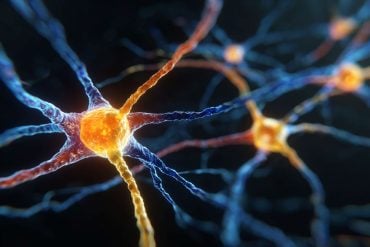Summary: Researchers suggest that the popular commercial dietary supplement nicotinamide riboside (NR), a form of vitamin B3, might raise the risk of serious diseases, including cancer.
The study found that high levels of NR could increase the risk of developing triple-negative breast cancer and its metastasis to the brain. Using a novel imaging technique based on ultrasensitive bioluminescent imaging, the team studied the presence of NR in cancer cells, T cells, and healthy tissues.
The researchers hope the findings will aid in developing inhibitors that could enhance the efficacy of cancer therapies.
Key Facts:
- Nicotinamide riboside (NR), a dietary supplement, could potentially increase the risk of developing triple-negative breast cancer and cause it to spread to the brain.
- A novel imaging technique based on ultrasensitive bioluminescent imaging was used to measure the levels of NR in cancer cells, T cells, and healthy tissues.
- The study underscores the necessity of investigating potential side effects of supplements like NR, particularly for people with varying health conditions.
Source: University of Missouri
While previous studies have linked commercial dietary supplements like nicotinamide riboside (NR), a form of vitamin B3, to benefits related to cardiovascular, metabolic and neurological health, new research from the University of Missouri has found NR could actually increase the risk of serious disease, including developing cancer.
The international team of researchers led by Elena Goun, an associate professor of chemistry at MU, discovered high levels of NR could not only increase someone’s risk of developing triple-negative breast cancer, but also could cause the cancer to metastasize or spread to the brain.
Once the cancer reaches the brain, the results are deadly because no viable treatment options exist at this time, said Goun, who is the corresponding author on the study.
“Some people take them [vitamins and supplements] because they automatically assume that vitamins and supplements only have positive health benefits, but very little is known about how they actually work,” Goun said. “Because of this lack of knowledge, we were inspired to study the basic questions surrounding how vitamins and supplements work in the body.”
Following the death of her 59-year-old father only three months after being diagnosed with colon cancer, Goun was moved by her father’s passing to pursue a better scientific understanding of cancer metabolism, or the energy through which cancer spreads in the body.
Since NR is a known supplement for helping increase levels of cellular energy, and cancer cells feed off of that energy with their increased metabolism, Goun wanted to investigate NR’s role in the development and spread of cancer.
“Our work is especially important given the wide commercial availability and a large number of ongoing human clinical trials where NR is used to mitigate the side effects of cancer therapy in patients,” Goun said.
The researchers used this technology to compare and examine how much NR levels were present in cancer cells, T cells and healthy tissues.
“While NR is already being widely used in people and is being investigated in so many ongoing clinical trials for additional applications, much of how NR works is a black box—it’s not understood,” Goun said.
“So that inspired us to come up with this novel imaging technique based on ultrasensitive bioluminescent imaging that allows quantification of NR levels in real time in a non-invasive manner. The presence of NR is shown with light, and the brighter the light is, the more NR is present.”
Goun said the findings of the study emphasize the importance of having careful investigations of potential side effects for supplements like NR prior to their use in people who may have different types of health conditions.
In the future, Goun would like to provide information that could potentially lead to the development of certain inhibitors to help make cancer therapies like chemotherapy more effective in treating cancer. The key to this approach, Goun said, is to look at it from a personalized medicine standpoint.
“Not all cancers are the same in every person, especially from the standpoint of metabolic signatures,” Goun said. “Often times cancers can even change their metabolism before or after chemotherapy.”
About this cancer research news
Author: Eric Stann
Source: University of Missouri
Contact: Eric Stann – University of Missouri
Image: The image is in the public domain
Original Research: Closed access.
“A bioluminescent-based probe for in vivo non-invasive monitoring of nicotinamide riboside uptake reveals a link between metastasis and NAD+ metabolism” by Tamara Maric et al. Biosensors and Bioelectronics
Abstract
A bioluminescent-based probe for in vivo non-invasive monitoring of nicotinamide riboside uptake reveals a link between metastasis and NAD+ metabolism
Nicotinamide riboside (NR) is a form of vitamin B3 and is one of the most studied compounds for the restoration of cellular NAD+ levels demonstrating clinical potential in many metabolic and age-related disorders.
Despite its wide commercial availability as a powerful nutraceutical, our understanding of NR uptake by different cells and tissues is greatly limited by the lack of noninvasive in vivo imaging tools limiting its clinical translation.
Here, we report the development and validation of a bioluminescent NR uptake probe (BiNR) for non-invasive longitudinal imaging of NR uptake both in vitro and in vivo. In addition, we optimized an assay that allows monitoring of NR flux without the need to transfect cells with the luciferase gene, enabling the use of the BiNR probe in clinical samples, as demonstrated with human T cells.
Lastly, we used BiNR to investigate the role of NR uptake in cancer prevalence and metastases formation in triple negative breast cancer (TNBC) animal model.
Our results demonstrate that NR supplementation results in a significant increase in cancer prevalence and metastases of TNBC to the brain.
These results outline the important role of powerful nutraceuticals like NR in cancer metabolism and the need to personalize their use in certain patient populations.








